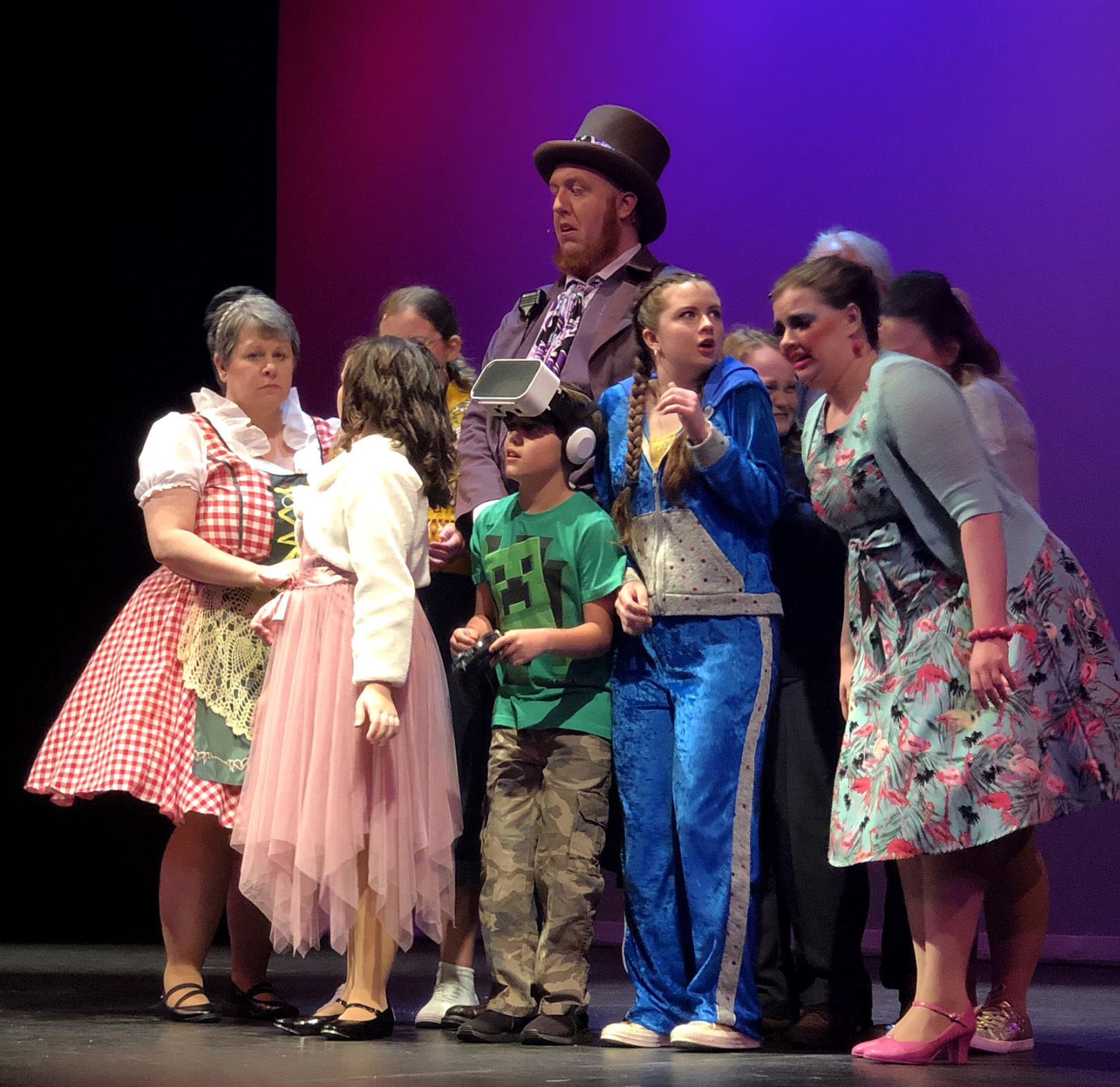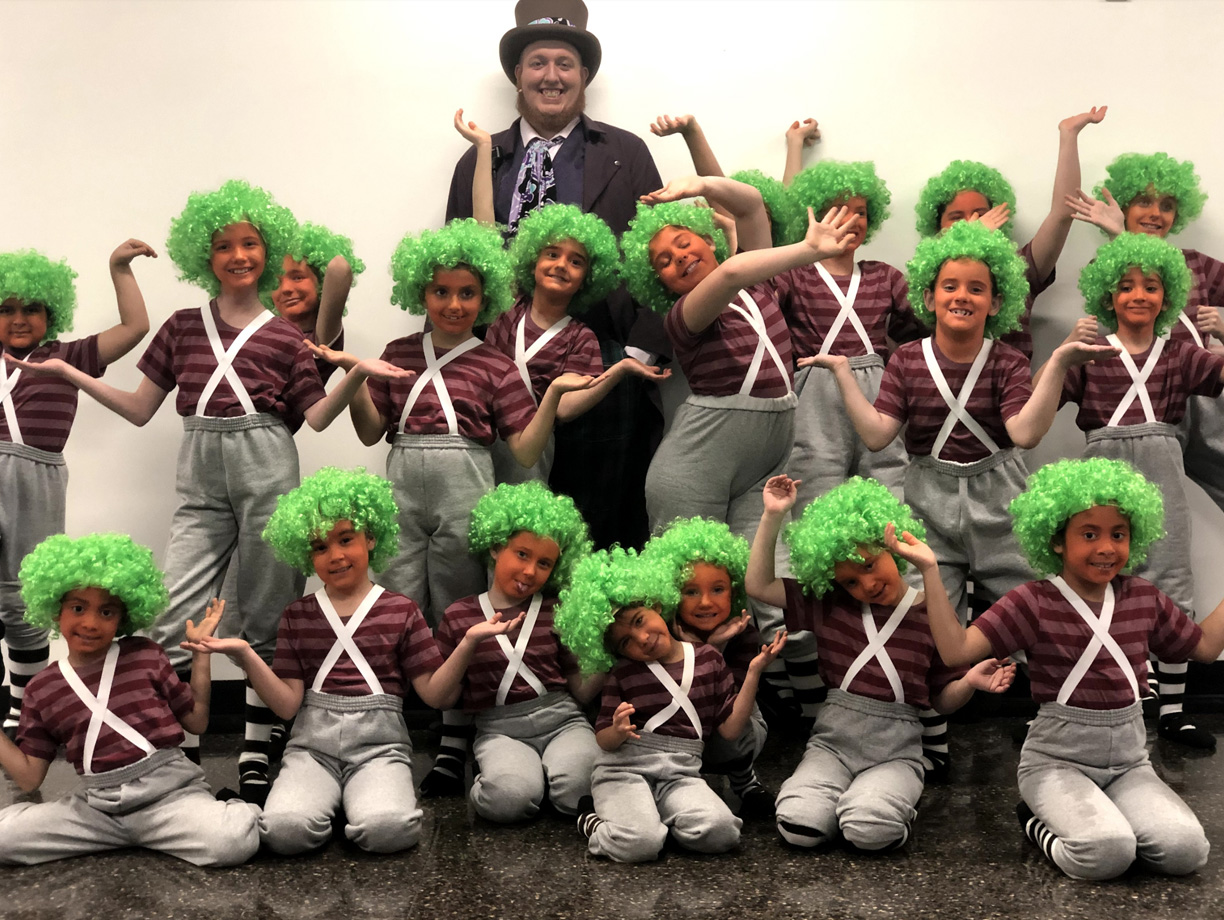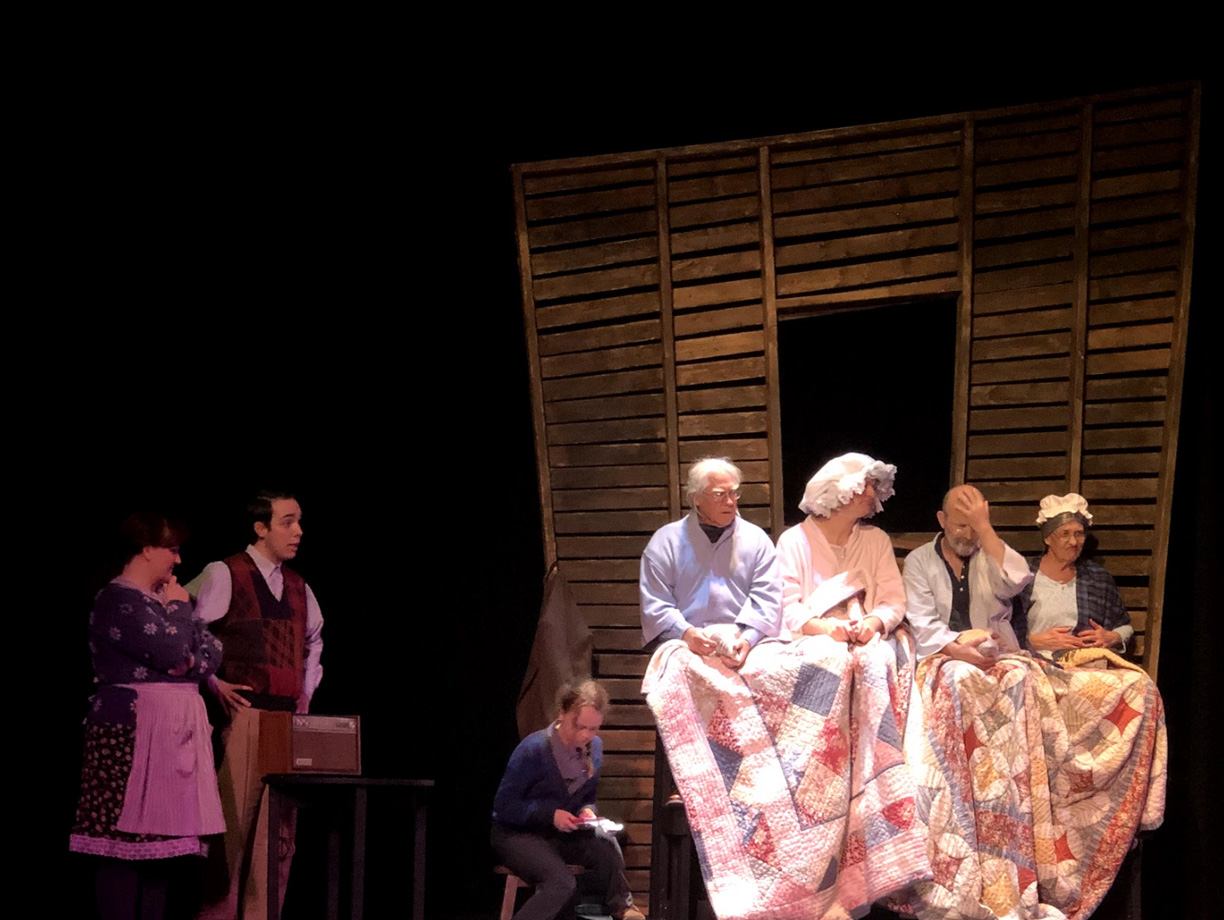
REVIEW: Bayou Theater transforms into a ‘world of pure imagination’

The University of Houston-Clear Lake’s (UHCL) Bayou Theater, in collaboration with the Bay Area Houston Ballet and Theatre (BAHBT), premiered the first fully staged production by the university in 20 years with “Roald Dahl’s ‘Willy Wonka.’” This production was an adaptation of Roald Dahl’s book “Charlie and the Chocolate Factory” and ran the weekends between April 4 – 14.
The original story follows impoverished child, Charlie Bucket, as he wishes to find one of five gold tickets inside a Wonka Candy Bar. This ticket allows him, and one chaperone, to experience an exclusive tour of the elusive chocolate factory. The contest advertised that one child would get to go home with a lifetime supply of Wonka chocolate. Chaos ensues as each of the children are put to the test to see who is worthy of the real prize – inheriting the business as Wonka grows old.
With the scale of the cast and set needed to pull off a Roald Dahl classic, the Bayou Theater and BAHBT team had their work cut out for them. “Think[ing] positive” definitely helped as even with some shaky acting by the supporting cast and underwhelming scenes late in the performance, it still was worth coming out to campus for a fun evening of music and theater.
Cotton candy casting
The cast was made up of performers from all over the Houston-Galveston area with most having a background in theatre, music performance and/or dance. With most performers’ strengths being in the latter two, the acting did not always seem sincere. The leads like protagonist Charlie, played by Gentry Lumpkin, and narrator Willy Wonka, played by Gunnar Teitge, helped keep everyone moving forward for the most part and not really leaving room to dwell on some puzzling lines.
Despite the lack of diversity in casting, there were some unique gender swaps that made for an interesting adaptation. Both Augustus Gloop played by Julie Blackman and Grandma played by Jeff Blackman were cross-gender cast.
The central character of the show, Charlie, was changed to a girl for this production, as the book and film adaptations have the character be male. This made the lack of a romantic ending with a female lead a refreshing change to most female-led musicals.

Lumpkin’s performance as Charlie really dazzled the audience. Her positive spirit while her family is on hard times, and sense of wonder when entering the factory during Act II, was believable and enjoying to experience with her.
In addition to Charlie, the character of Mike TeaVee, performed by Adan Carcano, and the Gloop family, performed by Julie Blackman and UHCL’s own Tracy Rider, had stellar performances. Rider was one of the last students to earn her BA in Theater before UHCL closed the degree program in the early 90s.
The group dynamics of the chorus and the Oompa-Loompas both stood out for opposite reasons. The chorus of children, mostly made up of performers from the BAHBT, landed every jump and flip, but it felt a little out of place after the first time.
It was impressive because those are no smaller feats and show how talented they are, but in the context of the scene and what was happening it felt out of place. The Oompa-Loompas, on the other hand, were mostly out of sync unlike in most portrayals, but it still looked adorable and offered a version of the Oompa-Loompas where each individual personality showed.
Marshmallow music
In terms of music production, it started off a little shaky. Whether it was because of nerves or overconfidence, Teitge, and musicians, Eduardo Guzman, David Hernandez and Michael Metz, were not always synced up with each other, with Teitge seeming to rush the ends of his bars.
Outside of that opening moment and some exhaustion by the main character at the end of the production, the music was on point. The transition scores were delightful. As the theater program grows, there is hope to see more musicians involved in the productions.
The trio of musicians, as well as the choreographer, Channon Nichols, come from the company Nichol’s founded in 2018 “Pitch Me This (PMT).” PMT is a Houston-based live musical theater and commercial music production organization that helps with the financial resources to the performance end of entertainment.

Scrumdiddlyumptious sets
One of the most standout elements of the production was the use of the set. Act I, which consist of simple but engaging sets, placed high expectations for the contrast the audience expected to see in Act II. Unfortunately, the contrast was in quality, making the mysterious Wonka Factory explored in the second act underwhelming.
Act I made use of spotlights and stage direction, scenes during the introduction of each golden ticket winner and let the performances shine. Outside of the Bucket residence, Willy Wonka’s candy cart, use of a single reporter, Phineas Trout, played by Alex Trout, and the ticket winner lights help guide the narrative.
In most adaptations, the second act is generally supposed to blow the audience away visually as this is the famous factory, but this production’s version fell flat. With a tight budget, it might have helped if the production used projections on stage and wood cutouts.
Despite its shortfall, it had memorable moments on stage that rivaled Act I like the bubble room, TV room and chocolate river. The bubble room where Charlie and Grandpa Joe, played by Charles Milby, drank the bubble serum and began floating used doppelganger hand and rod puppets to create the flying effect. This was silly, but in a whimsical way that was perfect for the scene.
Importance of performance art
This performance did what it was supposed to do, which is bring people together in celebration of art and storytelling, while also letting the audience escape life’s day to day demands. Although a bit rough around the edges, the production marks the rebirth of the large scale community theatre that the UHCL community deserves.
